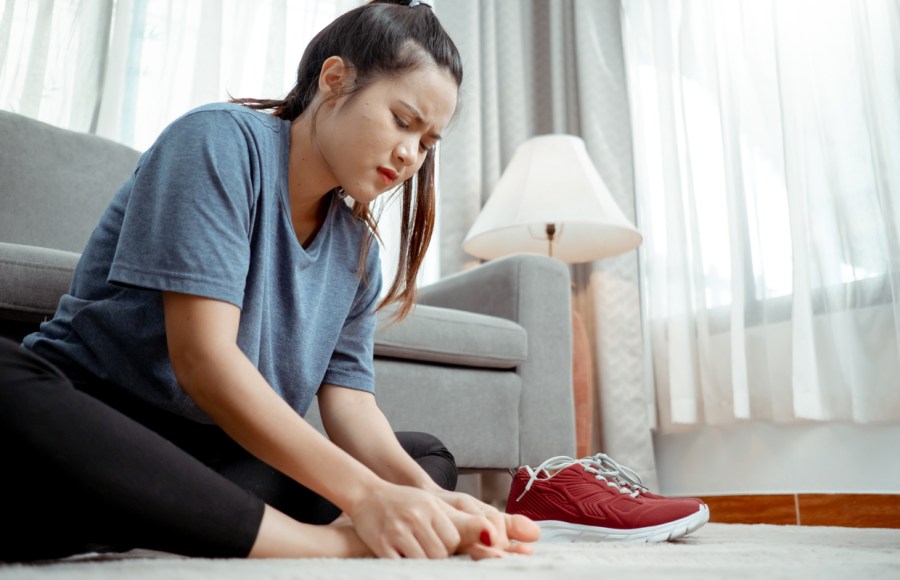When getting into walking or hiking, you might spend a lot of your time thinking about your kit, your technique or your pace. But do you spend enough time thinking about your feet? It’s crucial to look after your foot health when going for a walk or hike – after all, they will be carrying you the entire way! We chatted to the foot health experts to get some top tips on how to look after your feet before, during and after your walks…
Q. What can you do to save your feet if you discover your footwear isn’t suitable once you’ve set off?
Emma McConnachie, podiatrist for the College of Podiatry says…
‘Watch out for hotspots – areas where you feel rubbing where a blister could form. If you identify any, put a layer of micropore tape on the unbroken skin – available from pharmacies – to reduce the friction.’
Doctor B, podiatrist and founder of Sole Body Sole says…
‘One of the fastest ways to ruin a new adventure is by wearing an uncomfortable pair of shoes. Don’t wear them for long periods of time – ideally you should pack a spare pair that are already worn in. If not, head to the nearest shoe shop explain your problem so they can kit you out in some trainers that are instantly wearable.’
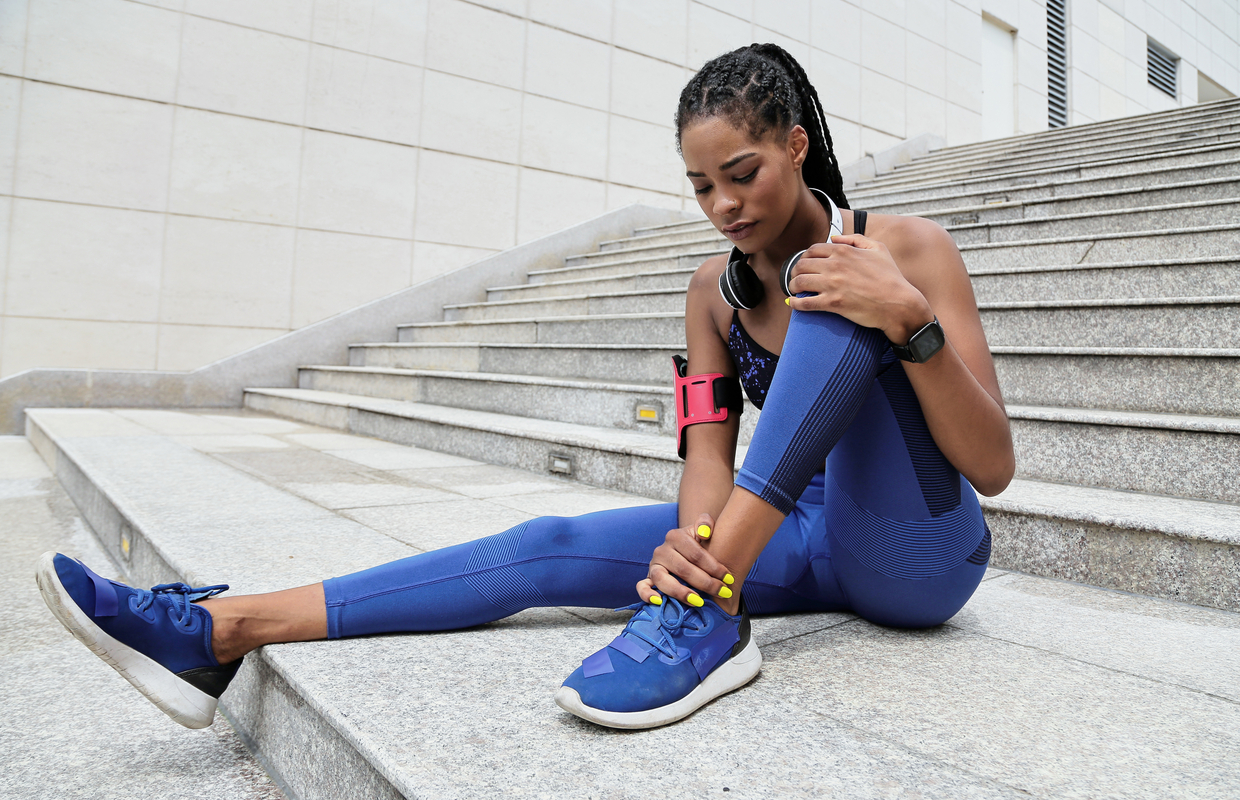
Q. What’s a quick pick-me-up for feet during breaks on walks?
Emma McConnachie says…
‘A foot roller helps to massage tired feet, but if you don’t have one to hand, try using a round water bottle. Place it on its side on the floor and roll the arch of your foot backwards and forwards over it.’
Doctor B says…
‘Try an alternating foot bath – one with cold water and one with warm water. Dip your feet in either one for two minutes then switch to the other, and repeat until they feel soothed. The alternate water temperature opens and closes your veins, boosting your circulation and so relieving sore feet.’
Charlotte Vohtz, founder of Green People says…
‘Place 12 marbles on the floor. With bare feet, pick them up one by one with your toes and drop them into a bowl. Flex your ankles back and forth as you do it and practise clockwise and anti-clockwise rotations to strengthen your feet and ankles.’
Q. I’ve developed an ache in the arches of my feet. What causes this?
David Weiner of fitness app freeletics.com says…
‘The dreaded plantar fasciitis, or heel pain, is thought to affect 10 per cent of us at some point. High impact exercise such as hill or power walking can create forces up to 20 times your weight, and just a couple of places you will feel these are your feet and your knees. The main way to avoid developing plantar fasciitis is to have your gait analysed at a sports shop. Many offer this for free to help you buy suitable trainers. It’s also worth building up your mileage slowly.
‘You could also look into getting some special insoles. Enertor PX1 insoles (£29.99). are said to be 89 per cent more comfortable than just standard insoles. They include the first shock absorbing technology to be specifically developed for protecting the feet and body from ground forces and are provided to the NHS and mandated by the British Army. They are even worn and endorsed by the legend, Usain Bolt!’
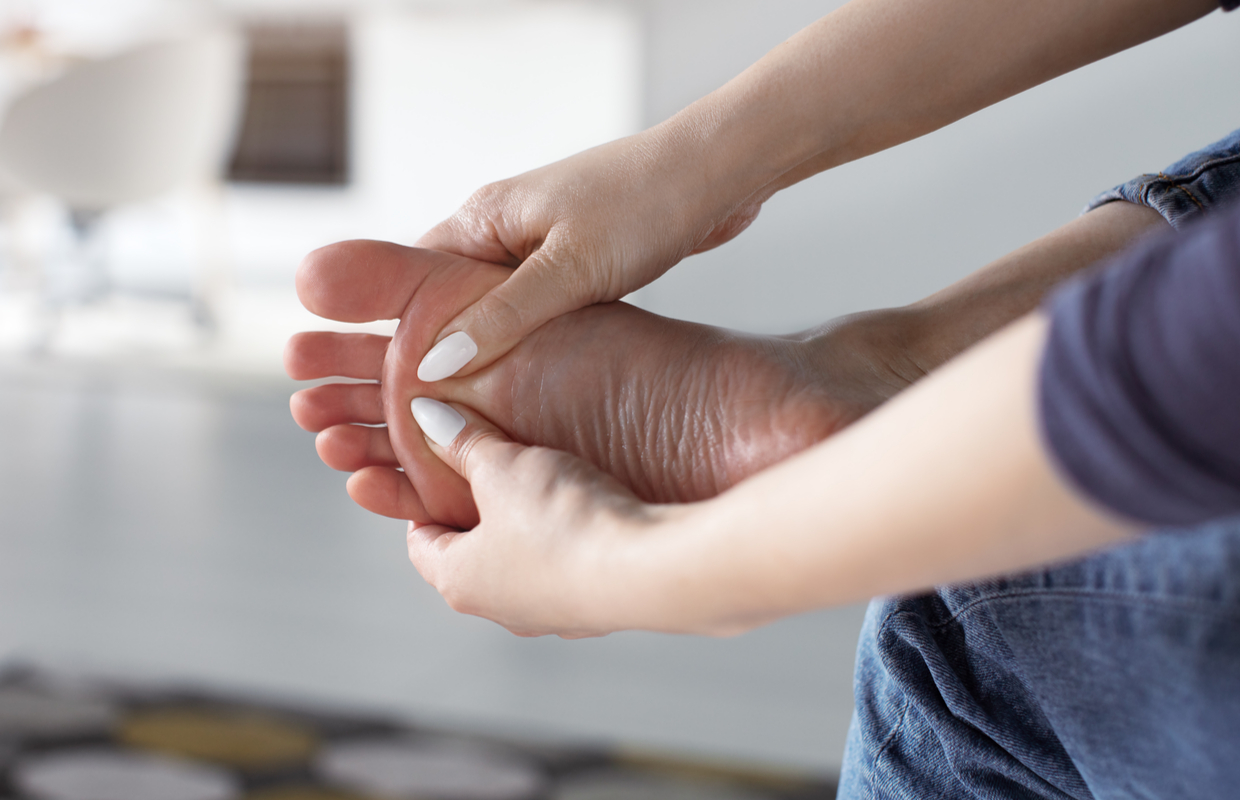
Q. How can I help my tender feet recover after a longer walking adventure?
Doctor B says…
‘Many people have sore feet and especially aching heels after walking holidays – especially if it has involved mixed terrain. My first tip would be to give your feet a good stretch by taking a seat and taking hold of all five toes from the underside of the foot and stretching upwards and downwards for a few minutes.
‘Next, sit yourself on the floor with your feet facing a wall and lock the entire soles of your feet onto the wall surface and push against it to give your calves a good stretch. Finally, place a tennis ball or a golf ball underneath the soles of your feet and apply gentle pressure to release tension.
‘If you’ve had warm – and maybe wet – feet, you should check them for infections. Canesten Bifonazole Once Daily Cream (£5.99) is an effective treatment if you develop athlete’s foot. If you wear nail polish, remove it properly each time you refresh the colour so you can check for any symptoms of fungal nails. Canespro Fungal Nail Treatment Set (£29.99) will help with this if you do find any.’
Q. How can I protect my feet while walking/hiking?
Bente Smith-Rewse, foot health expert, biomechanics specialist and founder of www.enertor.com, says…
Selecting the right footwear for walking and hiking:
“Choosing the right footwear for walking and hiking is essential for comfort, support and injury prevention. Your hiking shoes or boots should have a snug fit with enough space for toe movements – a poor fit can cause blisters, pain and hotspots. Lightweight shoes are fine for trails but for tougher, wet and rocky terrain, boots with thick soles provide more ankle support, and adequate tread for grip. It’s best to break in new hiking boots by wearing them on short walks before a big hike to soften the material and ensure they’re comfortable.
“To ensure you can walk the extra miles in comfort, make sure you buy scientifically tested shock absorbing insoles for trail shoes or hiking boots, such as Enertor. The insoles act as an insulator keeping your feet snug, supporting your arch and protecting your every stride. Through PX1 technology, Enertor insoles transmit impact horizontally through the insole rather than vertically, protecting your lower limbs, hips and back. They’ll also give that new-shoe feeling every time.
Prolonging the life of your footwear:
“To prolong the life of your hiking boots, remove dirt and mud with a brush or warm water and mild soap, drying naturally in a well-ventilated space is best as sunlight – radiators can crack leather and weaken adhesives. Be aware, using chemicals could damage the fabric or leather. Take out any insoles and dry them separately. A good tip; insert newspaper inside the boots to speed up the drying time. Once fully dried, apply waterproof spray or wax every few months. Store boots in a dry place, avoiding direct sunlight and stacking heavy items on top of your boots, this can deform their shape. To improve comfort and prevent excess wear on the boots structure replace the laces and your Enertor insoles when needed.
Combining exercises into a weekly routine can greatly enhance strength, endurance and stability making hiking and walking more enjoyable and less strenuous…
Leg strength: Squats to strengthen the quads, hamstrings, glutes, and core for uphill and downhill walking.
Ankle and Calf strength: Calf raises help with inclines and stability on rough terrain. Stand on the edge of a step, lift your heels, and lower them back down. Toe and heel walks also build calf and shin strength for better foot stability and endurance. Walk on your toes for 30 seconds, then on your heels for 30 seconds. Ankle Circles help improve ankle mobility, reducing the risk of sprains on uneven ground. Sit and rotate your foot in a circular motion.
Core Stability: Core strength is essential for maintaining balance and posture on uneven trails, plus it reduces fatigue when carrying a heavy backpack. Bird Dogs are a great way to build core, back and hip stability for balance. Start on all fours, extend one arm and the opposite leg, hold briefly, then switch.
Hip and Glute Strength: Strong glutes and hamstrings support uphill climbs and overall stability. The gluteus medius is a highly functional muscle that helps with hip movement, to improve lateral stability and reduce knee strain. A side plank with leg lift works well. Start in a side plank position with your elbow directly under your shoulder and your legs stacked. Lift the top leg while keeping your hips level.
Upper body and posture: Push-ups strengthen the upper body, helpful for using trekking poles or handling a backpack. Another great way to build strength is using resistance bands or dumbbells to perform a shoulder press.
Balance and Coordination: critical for navigating uneven terrain. Perform Single-Leg Stands on one leg for 30 seconds, then switch. When ready, repeat with closed your eyes or stand on an unstable surface.
Recommended kit:
Enertor’s PX1 insoles – Guaranteed to last at least 500 miles, these insoles give that cushioned, new shoe feeling every time! They truly protect your feet, limbs and joints from the demands and shockwaves of outdoor pursuits, step after step. Through PX1 technology, Enertor insoles transmit impact horizontally through the insole rather than vertically. Running and walking posture is improved, risk of injury is reduced and long-term protection ensured.
Scientifically proven: 89% more protection per mm. 40% lighter, 90% softer than standard insoles. 75% with healed plantar fasciitis. 91% of foot pain sufferers report an improvement in their discomfort.
Sizes UK 3-14. Worn and endorsed by Usain Bolt, Team GB and provided to the NHS and British Army.
To learn more about shock-absorbing insoles and protecting your feet from the demands of outdoor adventures, visit www.enertor.com
5-step foot health care routine
Don’t fret if your feet have been overworked on your lengthy walks or hikes. Try out these tips to restore your foot health…

Step 1: Soak
A good soak will soothe aching feet and soften hard skin. Create a footbath with the Better You Magnesium Muscle Bath Flakes (£9.95), which feature an energising blend of Zechstein magnesium, lemon and rosemary to help your feet recover after exercise.
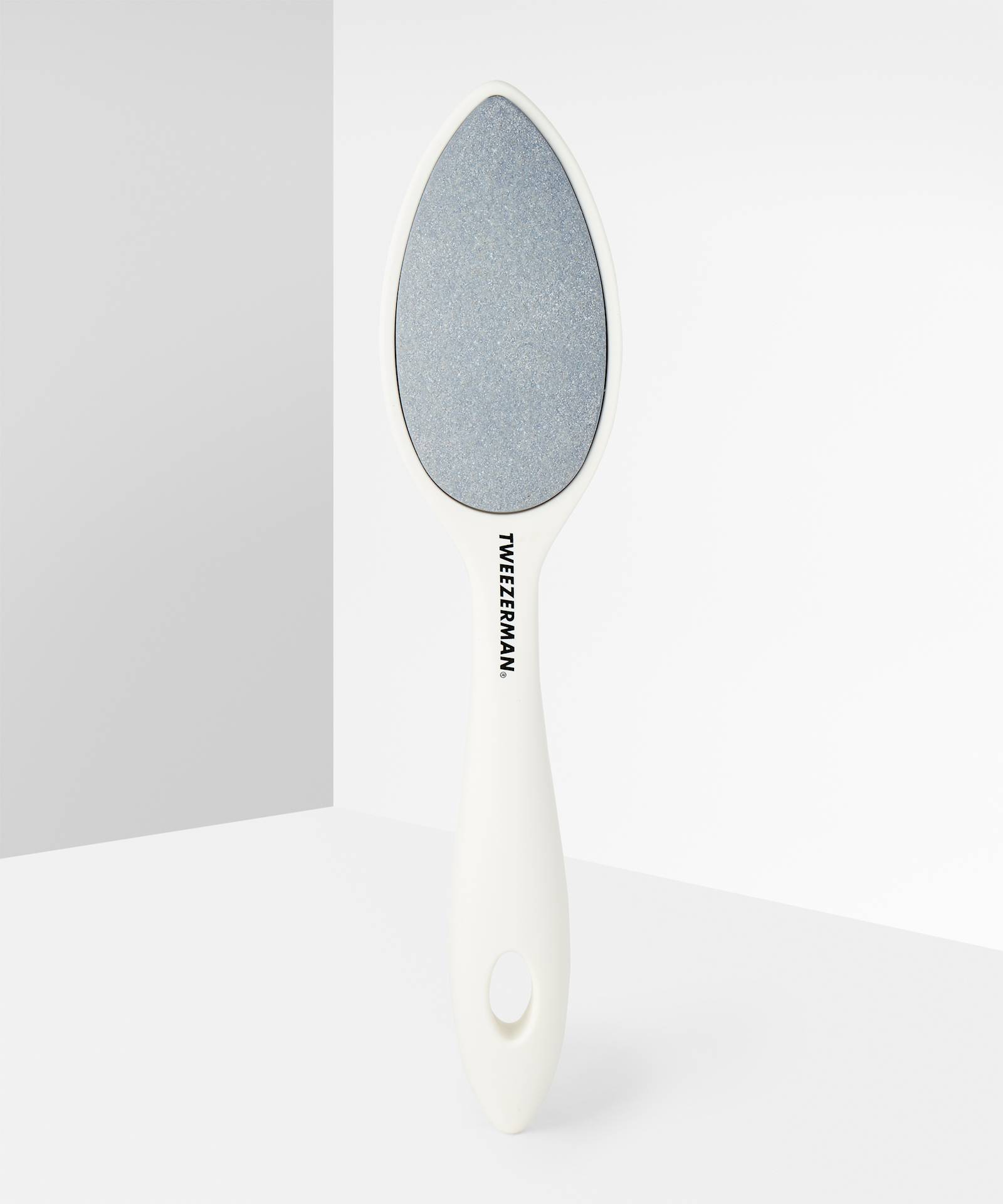
Step 2: Buff
Once your feet are dry, tackle any really tough spots of skin. The Tweezerman Sole Smoother Anti-Bacterial Callus Stone (£18) is infused with silver for protection from germs and bacteria.
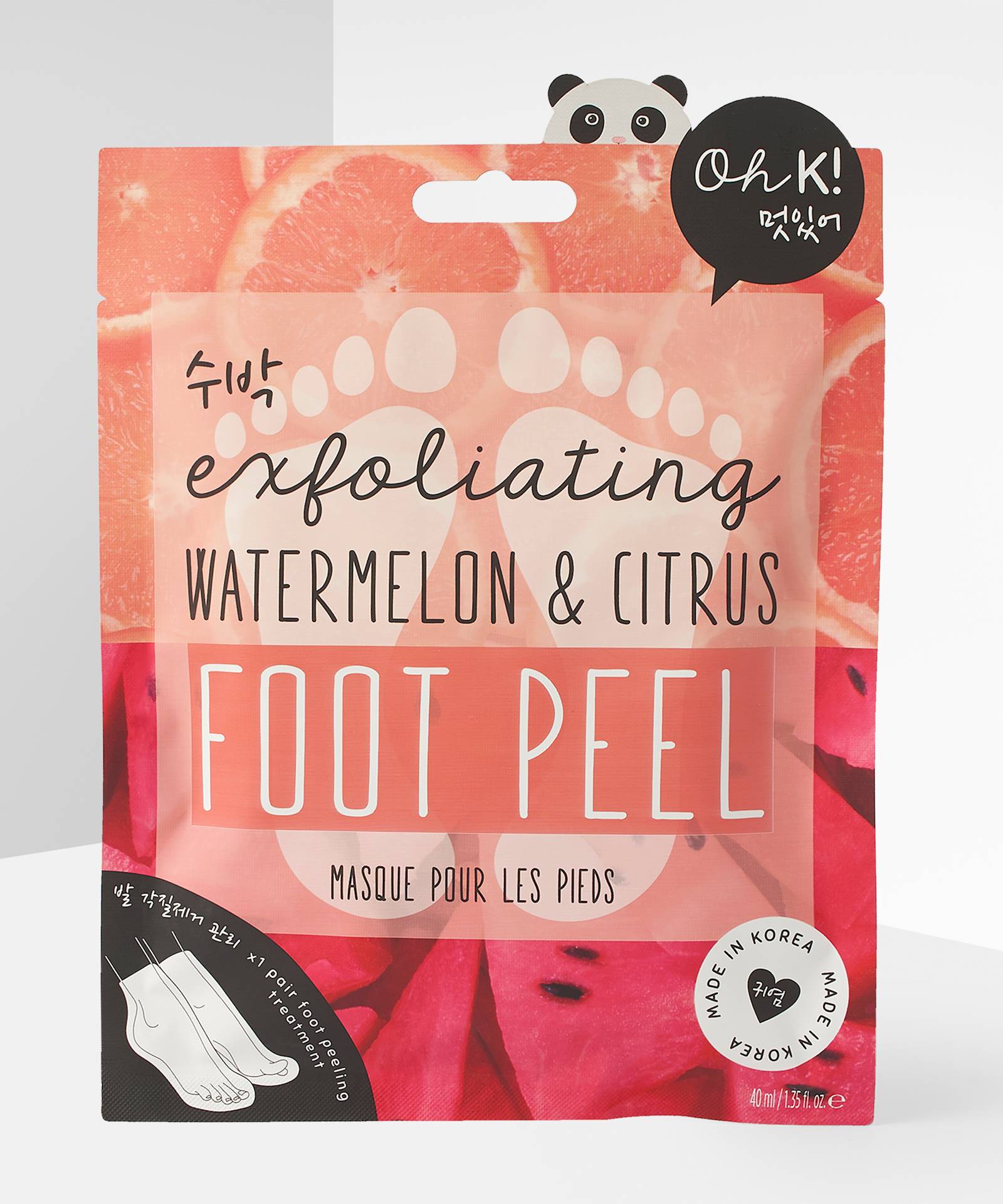
Step 3: Mask
Not for the squeamish – but you may have noticed the trend for foot masks, which you wear like socks for 30 mins then a few days later, the dead skin surface peels away. The Oh K! Watermelon & Citrus Foot Peel (£8.50) is packed with antioxidant watermelon, salicylic acid and lactic acid to gently exfoliate and remove dead skin.
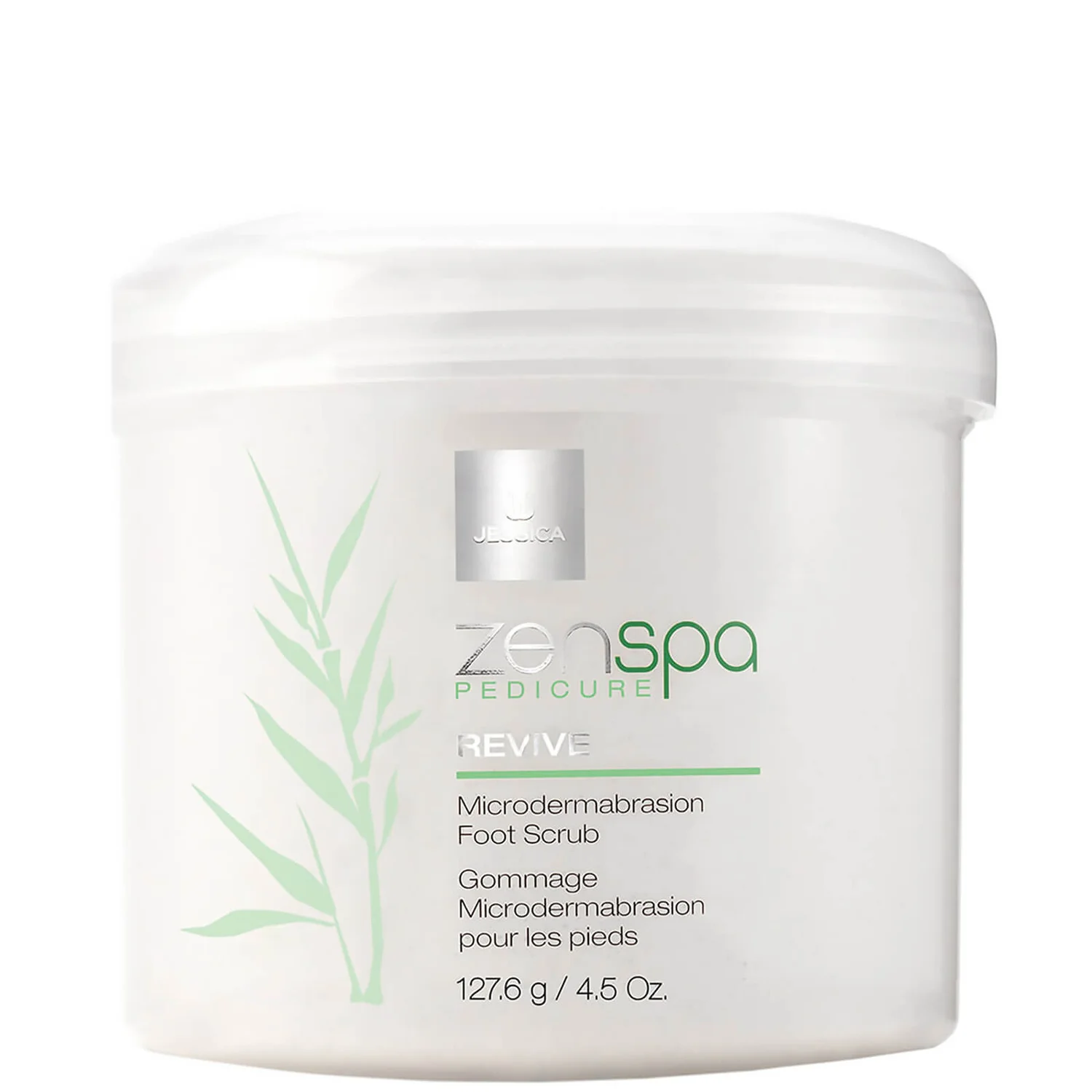
Step 4: Exfoliate
After the peel, gently remove remaining dead skin with an exfoliator. Jessica ZenSpa Revive Microdermabrasion Foot Scrub (£16.95) is fortified with finely ground volcanic pumice, along with Asian aquatic plant extracts, including antioxidant blue lotus flower, soothing water lily root and silica-rich bamboo shoot, to cleanse and purify feet whilst reducing cracked heels, calluses and sensitivity.
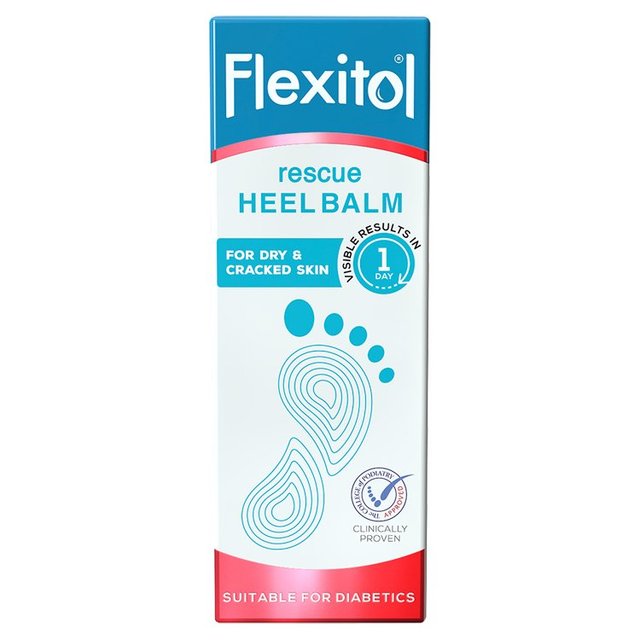
Step 5: Moisturise
A heel balm will keep newly pampered feet hydrated. Try clinically-proven Flexitol Heel Balm (£5.69). It contains various nourishing ingredients for intense hydration. Apply once or twice daily for the best restorative results.
Related: Best walking gear for women
Words: Katherine Watt | Images: Shutterstock

